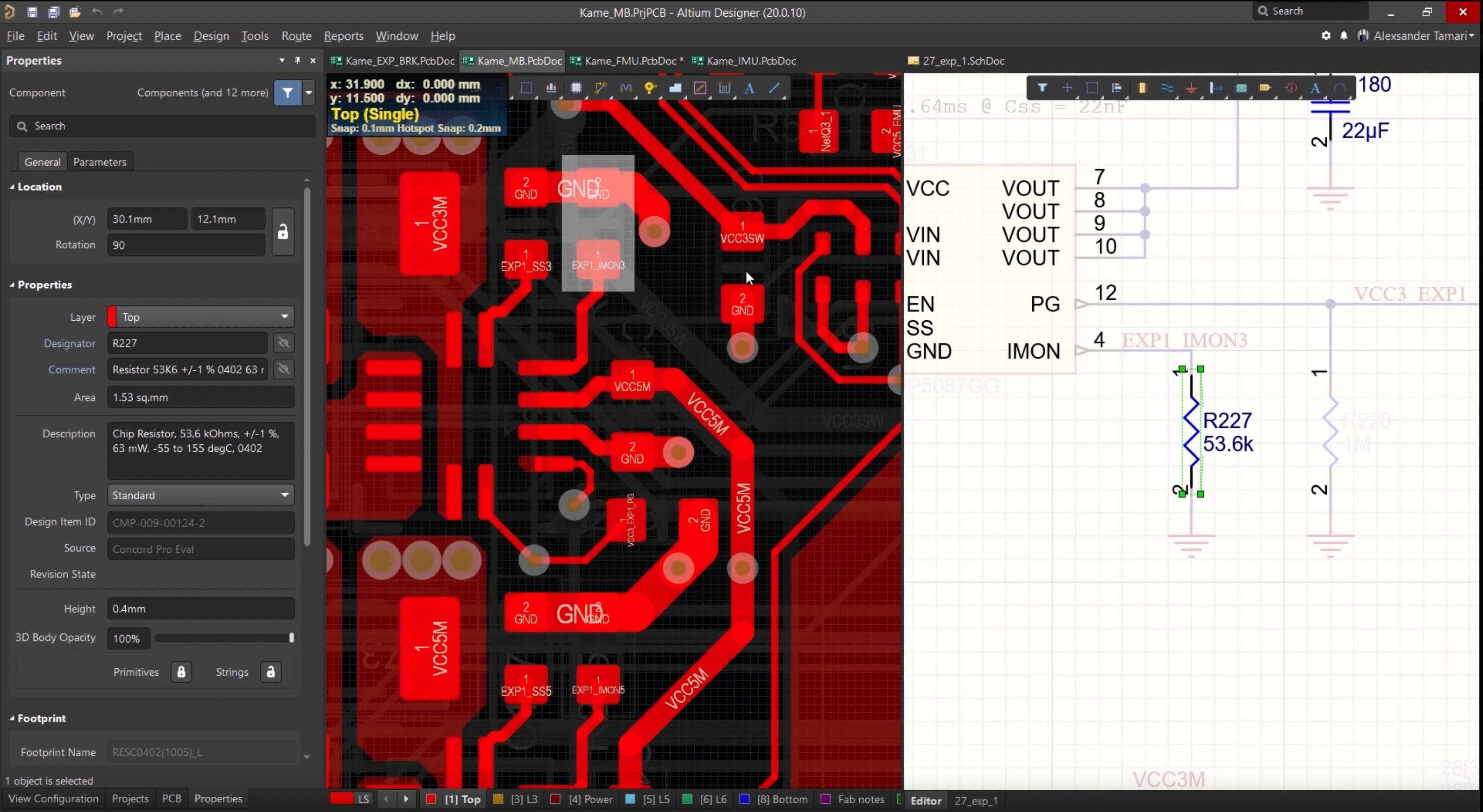In the fast-paced world of electronics, achieving design efficiency in online PCB (Printed Circuit Board) design is crucial for engineers and businesses alike. By leveraging modern tools like cloud platforms, synchronized BOM (Bill of Materials), and secure team collaboration spaces, you can streamline workflows, reduce errors, and bring products to market faster. This blog dives deep into how online PCB design enhances efficiency, focusing on key aspects such as synchronized BOM, team collaboration, cloud platforms, business design, and secure spaces. Let’s explore how these elements transform the design process and empower your projects.
What Is Online PCB Design and Why Does Efficiency Matter?
Online PCB design refers to the use of web-based tools and platforms to create, simulate, and manage circuit board layouts without the need for heavy desktop software installations. These platforms offer real-time access, collaboration, and data management features that traditional tools often lack. Efficiency in this context means reducing design time, minimizing errors, and ensuring seamless communication across teams—ultimately saving costs and accelerating time-to-market.
For engineers working on complex projects, even a small delay or error in the design phase can lead to significant setbacks. For instance, a mismatched BOM can result in ordering the wrong components, costing time and money. By adopting online design solutions with integrated features, you can tackle these challenges head-on. Let’s break down the core components that drive efficiency in online PCB design.
The Power of a Synchronized BOM in PCB Design
A synchronized BOM is a game-changer for PCB design efficiency. It ensures that the list of components in your design matches the actual parts database in real time, eliminating discrepancies between design files and procurement lists. Imagine working on a project with hundreds of components; manually updating the BOM every time a resistor or capacitor value changes (e.g., from 10kΩ to 15kΩ) can lead to errors. A synchronized BOM automates this process, linking directly to your design data.
With a synchronized BOM, changes in your schematic—like swapping a 1μF capacitor for a 2.2μF one to meet a specific timing requirement—are instantly reflected in the BOM. This reduces the risk of ordering incorrect parts and ensures that manufacturing teams have the most up-to-date information. The result? Fewer revisions, smoother production runs, and a significant drop in costly mistakes. For businesses, this translates to better inventory management and faster project timelines.

Leveraging Cloud Platforms for Seamless PCB Design
Cloud platforms are at the heart of modern online PCB design, offering a centralized space where design data is stored, accessed, and managed from anywhere. Unlike traditional software that ties you to a single workstation, cloud-based tools allow you to work on your PCB layout whether you’re in the office or halfway across the world. This flexibility is vital for global teams working on tight deadlines.
One major advantage of cloud platforms is real-time data syncing. For example, if you’re designing a board with specific trace widths (e.g., 0.2mm for high-speed signals at 5GHz), any updates you make are instantly visible to your team. This eliminates the need for manual file sharing, which often leads to version conflicts. Additionally, cloud platforms often come with built-in libraries for components, reducing the time spent searching for parts with the right specifications, such as a MOSFET with a 50V drain-to-source voltage.
Moreover, cloud solutions provide scalability for business design needs. Whether you’re a startup designing a single prototype or a large enterprise managing multiple projects, these platforms adapt to your workload without requiring expensive hardware upgrades. The ability to access powerful simulation tools—like thermal analysis for a power supply circuit dissipating 10W of heat—directly through the cloud further boosts efficiency.
 ."
."
Team Collaboration: Working Together in Real Time
Collaboration is a cornerstone of efficient PCB design, especially for teams spread across different locations. Online design tools with integrated team collaboration features allow multiple engineers to work on the same project simultaneously. This is particularly useful in scenarios where one team member focuses on the schematic while another optimizes the layout for signal integrity, ensuring traces for a 100MHz clock signal maintain minimal crosstalk.
Real-time collaboration means that if a team member adjusts a component placement to reduce electromagnetic interference (EMI) by 20%, everyone sees the change instantly. This cuts down on back-and-forth communication and prevents errors caused by outdated files. Additionally, many platforms include commenting and annotation tools, so you can leave feedback directly on the design—like noting that a 0.1μF decoupling capacitor should be placed closer to a microcontroller pin for better noise suppression.
For businesses, this level of collaboration streamlines workflows and fosters innovation. Design reviews that once took days due to scheduling conflicts can now happen in hours, with all stakeholders providing input in a shared, accessible environment. The result is a faster design cycle and a higher-quality end product.

Business Design: Scaling Efficiency for Enterprises
For companies involved in electronics manufacturing, online PCB design tools tailored for business design offer unmatched efficiency. These tools go beyond individual projects, providing features like project management, version control, and integration with supply chain systems. This ensures that every stage—from initial concept to final production—is optimized for speed and accuracy.
Consider a scenario where a business is designing a new IoT device with strict power constraints (e.g., a target current draw of under 50mA in sleep mode). Online platforms allow project managers to oversee multiple designs, track progress, and ensure that design rules—such as maintaining a 0.5mm clearance for high-voltage traces—are followed. Integration with manufacturing systems also means that once the design is finalized, it can be sent directly to production without manual file transfers, reducing lead times by days or even weeks.
Furthermore, business-oriented features like cost estimation tools help in budgeting. For instance, you can instantly see how choosing a 1% tolerance resistor over a 5% one impacts the overall cost of a 10,000-unit production run. This data-driven approach ensures that design decisions align with financial goals, making online PCB design a strategic asset for enterprises.
Secure Space: Protecting Your PCB Designs
Security is a top concern in online PCB design, especially when dealing with proprietary or sensitive projects. A secure space in a cloud platform ensures that your intellectual property—whether it’s a unique circuit for a medical device or a high-frequency RF board operating at 2.4GHz—is protected from unauthorized access.
Modern online design tools implement robust security measures, such as end-to-end encryption for data transfers and role-based access controls. This means only authorized team members can view or edit critical design files. For example, a contractor working on a specific layer of a multilayer PCB (like the ground plane for noise reduction) can be restricted from accessing the full schematic. This granular control minimizes the risk of data leaks.
Additionally, secure spaces often include backup and recovery options. If a design file is accidentally corrupted during a simulation of a 12V power circuit, you can roll back to a previous version without losing weeks of work. For businesses, this level of protection builds trust and ensures compliance with industry standards, especially in sectors like aerospace or automotive where design integrity is non-negotiable.
How These Elements Work Together for Maximum Efficiency
The true power of online PCB design lies in how synchronized BOM, cloud platforms, team collaboration, business design tools, and secure spaces integrate to create a cohesive workflow. Picture this: your team is designing a high-speed communication board with a 10Gbps data rate. Using a cloud platform, everyone accesses the same design files in real time. A synchronized BOM ensures that component changes—like upgrading to a faster oscillator—are reflected instantly, avoiding procurement delays.
Collaboration tools allow engineers to fine-tune trace impedances (e.g., targeting 50Ω for matched transmission lines) while managers track progress through business design features. All of this happens in a secure space, protecting sensitive data from competitors. The result is a design process that’s not only faster but also more accurate and reliable. For instance, studies show that real-time collaboration can reduce design iterations by up to 30%, shaving days off project timelines.
Practical Tips for Boosting Efficiency in Online PCB Design
To make the most of online PCB design tools, consider these actionable strategies:
- Adopt a Synchronized BOM Early: Integrate BOM management from the start to avoid mismatches. Regularly check for updates to component availability, especially for critical parts like a 3.3V regulator.
- Use Cloud Features Fully: Take advantage of simulation tools to test designs under real-world conditions, such as a thermal rise of 40°C in a compact enclosure.
- Set Clear Collaboration Roles: Define who handles specific tasks—like layout or component selection—to avoid overlap and ensure accountability.
- Prioritize Security: Use strong passwords and two-factor authentication for your secure space, and limit access to sensitive projects.
- Leverage Business Tools: Use analytics to monitor design costs and timelines, ensuring alignment with production goals for batches of 5,000 units or more.
Conclusion: Transform Your PCB Design Process
Online PCB design is revolutionizing how engineers and businesses approach electronics projects. By focusing on design efficiency through synchronized BOM, cloud platforms, team collaboration, business design features, and secure spaces, you can cut down on errors, speed up workflows, and protect your valuable work. These tools aren’t just conveniences—they’re essential for staying competitive in a rapidly evolving industry.
Whether you’re designing a simple sensor board or a complex multilayer system, integrating these elements into your process will yield measurable results. Embrace the future of PCB design with online solutions, and watch as your projects move from concept to completion faster than ever before.
 ALLPCB
ALLPCB







